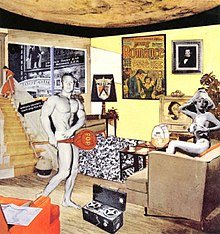Database for Headcase
Monday, October 23, 2017
Monday, May 15, 2017
Tuesday, December 16, 2014
Monday, November 24, 2014
The Number Two is made from Ones (edit 2)
The Number Two is made from Ones
Impassable barriers are what
they
are because we see
two banks
Because we see the walkable bridge
But there are no banks
No stairs to claim
Merely two shores and
a path we know to create.
are because we see
two banks
Because we see the walkable bridge
But there are no banks
No stairs to claim
Merely two shores and
a path we know to create.
Who can tell?
The finger points, but nothing
is there.
The curtain pulls back to reveal the cement wall
The lights shine to show waning towards a distance.
The box was empty all along
The curtain pulls back to reveal the cement wall
The lights shine to show waning towards a distance.
The box was empty all along
We realized
after a thorough investigation of every side,
of every crevice,
after a thorough investigation of every side,
of every crevice,
top meets bottom
but fails to bond as one and the same.
The inside was one side of
the molecularly dense ball.
Destination of comparison
My other that is I
We are two for one
indivisible, numerically deified,
inarticulate.
but fails to bond as one and the same.
The inside was one side of
the molecularly dense ball.
Destination of comparison
My other that is I
We are two for one
indivisible, numerically deified,
inarticulate.
Wednesday, November 19, 2014
Monday, November 03, 2014
Photomantage vs. Collage vs. Compositing
Photomontage[edit]
Main article: Photomontage
Collage made from photographs, or parts of photographs, is called photomontage. Photomontage is the process (and result) of making a composite photograph by cutting and joining a number of other photographs. The composite picture was sometimes photographed so that the final image is converted back into a seamless photographic print. The same method is accomplished today using image-editing software. The technique is referred to by professionals as compositing.
Richard Hamilton, John McHale, Just What Is It That Makes Today’s Homes So Different, So Appealing? 1956, collage, (one of the earliest works to be considered Pop Art)
Other methods for combining pictures are also called photomontage, such as Victorian "combination printing", the printing from more than one negative on a single piece of printing paper (e.g. O. G. Rejlander, 1857), front-projection and computer montage techniques. Much as a collage is composed of multiple facets, artists also combine montage techniques. Romare Bearden’s (1912–1988) series of black and white "photomontage projections" is an example. His method began with compositions of paper, paint, and photographs put on boards 8½ × 11 inches. Bearden fixed the imagery with an emulsion that he then applied with handroller. Subsequently, he enlarged the collages photographically.
The 19th century tradition of physically joining multiple images into a composite and photographing the results prevailed in press photography and offset lithography until the widespread use of digital image editing. Contemporary photo editors in magazines now create "paste-ups" digitally.
Creating a photomontage has, for the most part, become easier with the advent of computer software such as Adobe Photoshop, Pixel image editor, and GIMP. These programs make the changes digitally, allowing for faster workflow and more precise results. They also mitigate mistakes by allowing the artist to "undo" errors. Yet some artists are pushing the boundaries of digital image editing to create extremely time-intensive compositions that rival the demands of the traditional arts. The current trend is to create pictures that combine painting, theatre, illustration and graphics in a seamless photographic whole.
Monday, October 06, 2014
"Outro" by M83
"Outro"
I'm the king of my own land.
Facing tempests of dust, I'll fight until the end.
Creatures of my dreams raise up and dance with me!
Now and forever, I'm your king!
Facing tempests of dust, I'll fight until the end.
Creatures of my dreams raise up and dance with me!
Now and forever, I'm your king!
Subscribe to:
Posts (Atom)
Database for Headcase
***All poems are incorrectly formatted. Blogger.com does not allow me to format them they way I want to. saaaaaaaad.











